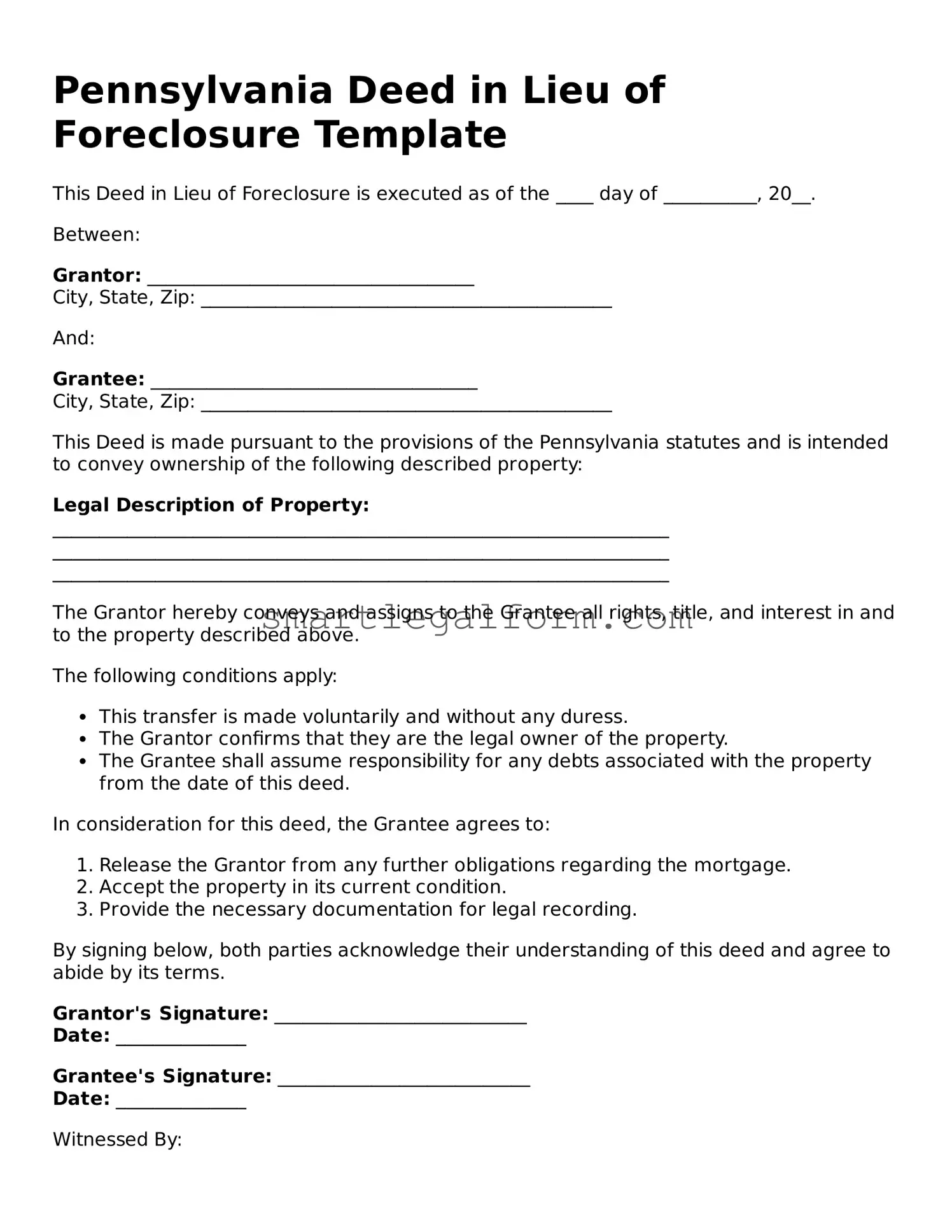Pennsylvania Deed in Lieu of Foreclosure Template
This Deed in Lieu of Foreclosure is executed as of the ____ day of __________, 20__.
Between:
Grantor: ___________________________________
City, State, Zip: ____________________________________________
And:
Grantee: ___________________________________
City, State, Zip: ____________________________________________
This Deed is made pursuant to the provisions of the Pennsylvania statutes and is intended to convey ownership of the following described property:
Legal Description of Property:
__________________________________________________________________
__________________________________________________________________
__________________________________________________________________
The Grantor hereby conveys and assigns to the Grantee all rights, title, and interest in and to the property described above.
The following conditions apply:
- This transfer is made voluntarily and without any duress.
- The Grantor confirms that they are the legal owner of the property.
- The Grantee shall assume responsibility for any debts associated with the property from the date of this deed.
In consideration for this deed, the Grantee agrees to:
- Release the Grantor from any further obligations regarding the mortgage.
- Accept the property in its current condition.
- Provide the necessary documentation for legal recording.
By signing below, both parties acknowledge their understanding of this deed and agree to abide by its terms.
Grantor's Signature: ___________________________
Date: ______________
Grantee's Signature: ___________________________
Date: ______________
Witnessed By:
____________________________________
Date: ______________
Notary Public:
____________________________________
My Commission Expires: ______________
